With CBT and EMDR, I can help you shift long-standing patterns to be more relaxed in mind and body.
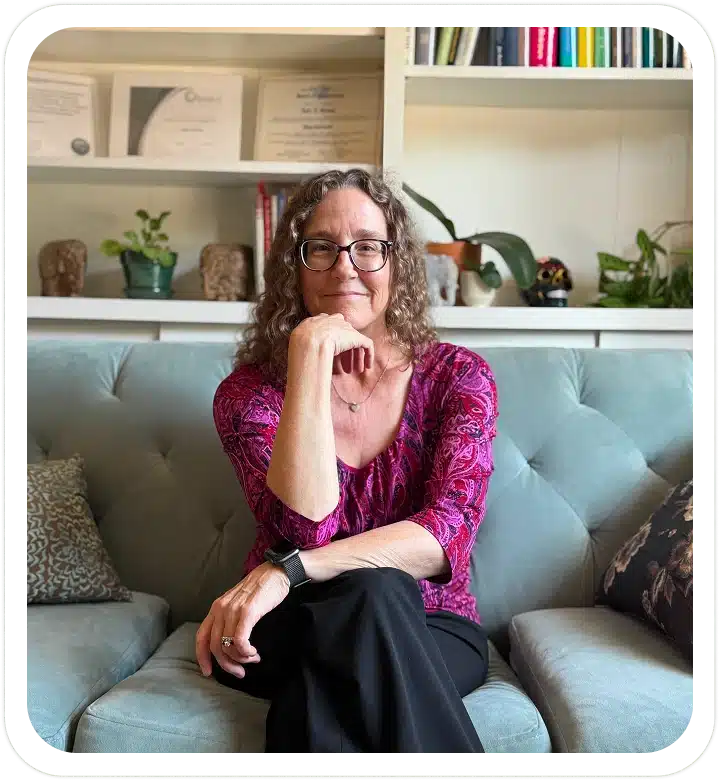





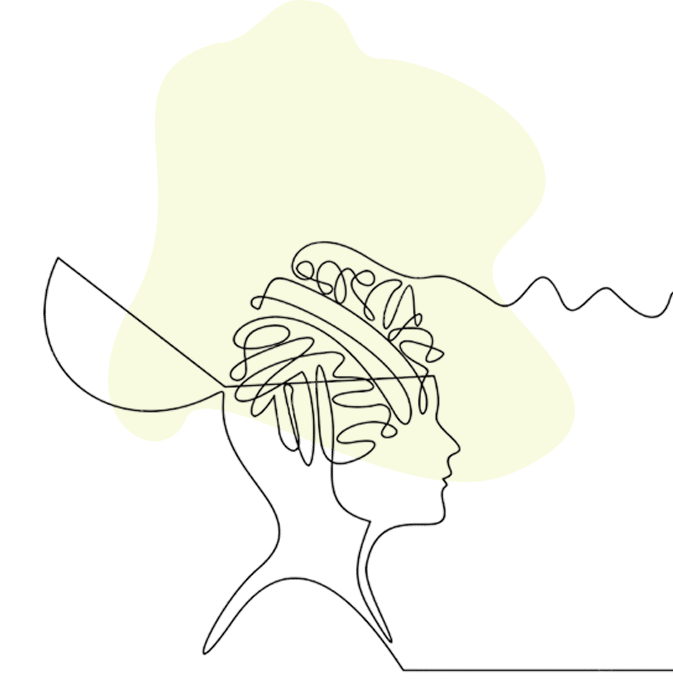
Fear is a natural, built-in response that helps us respond to stress and danger. But when the brain becomes stuck in high-alert mode, fear can morph into chronic anxiety. Then even small decisions can feel overwhelming. Sleep suffers, muscles stay tense, thoughts race, and it’s hard to feel settled, no matter how much you accomplish.
Over time, unchecked anxiety negatively shapes how you live, resulting in avoiding, double-checking endlessly, and struggling to relax even in moments that should feel safe.
It’s exhausting to live with constant “what ifs”, and even more frustrating when your rational mind knows there’s no real threat, but your body won’t get the message.

EMDR, CBT, and Mindfulness can help your brain and body learn new and healthier ways to respond to life’s challenges and stresses.
Anxiety Therapy provides a learning opportunity for your brain and body to update to the more accurate reality that you are not under constant threat, and even if something bad happens, you can manage.
In therapy with me, you will develop new skills and perspectives, become more capable of handling difficult situations with less wear and tear, and build resilience. You will shift out of survival mode and handle your life with greater ease and clarity.
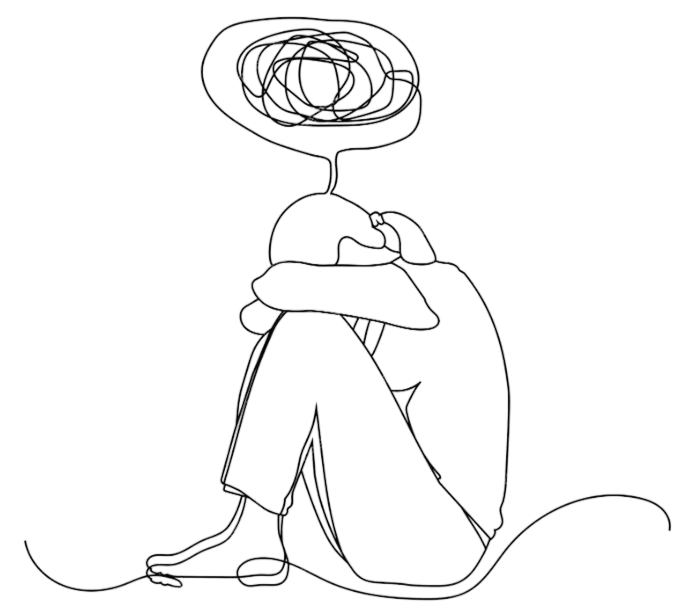
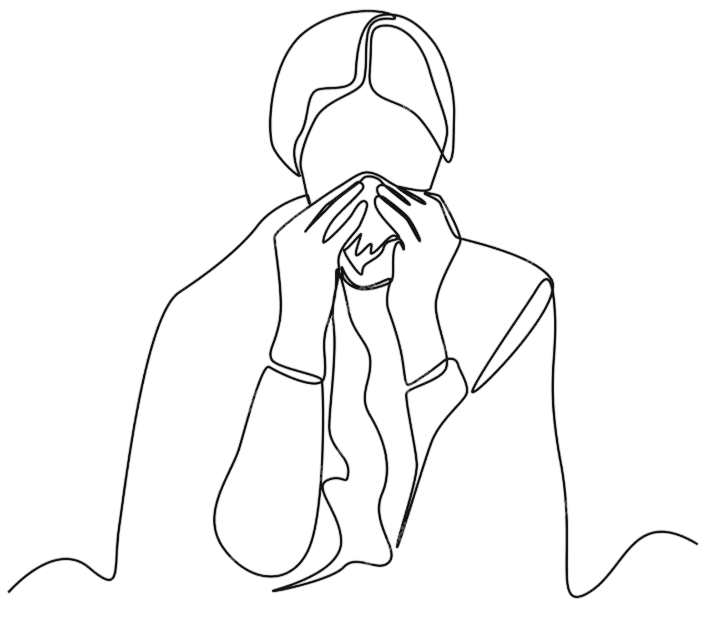
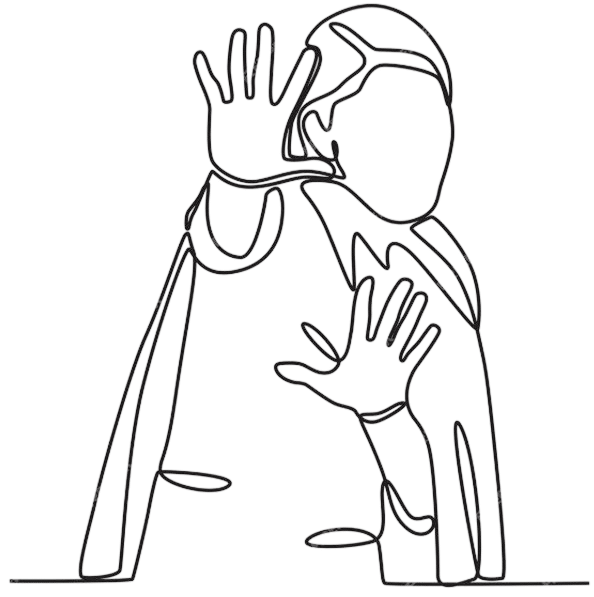
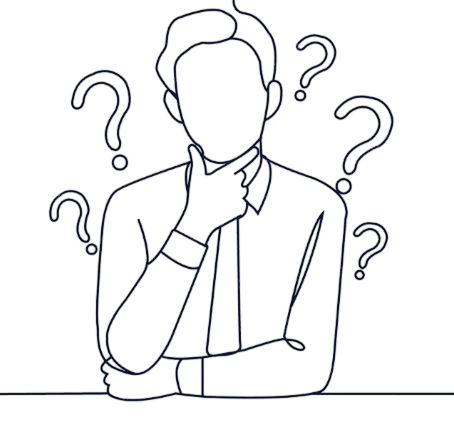
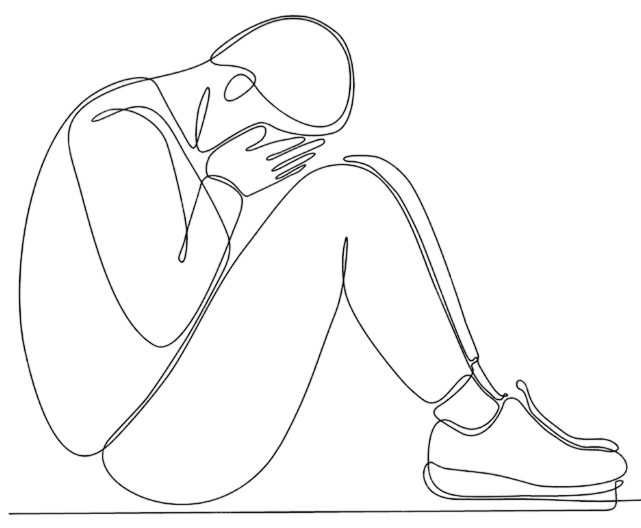
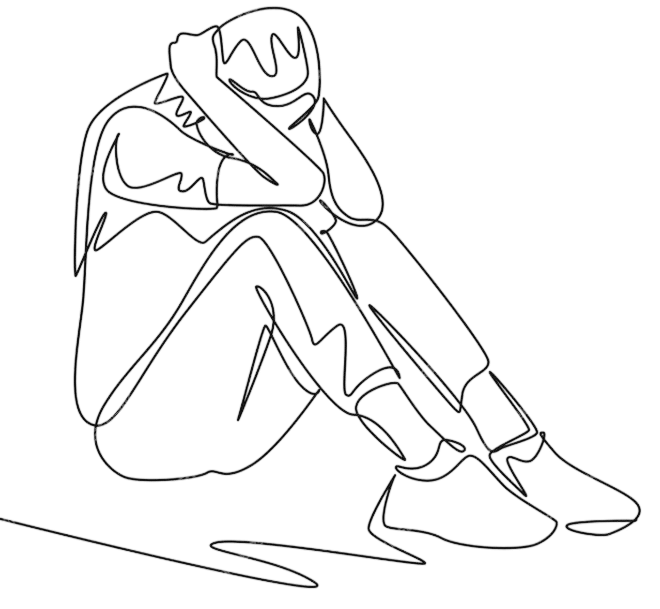
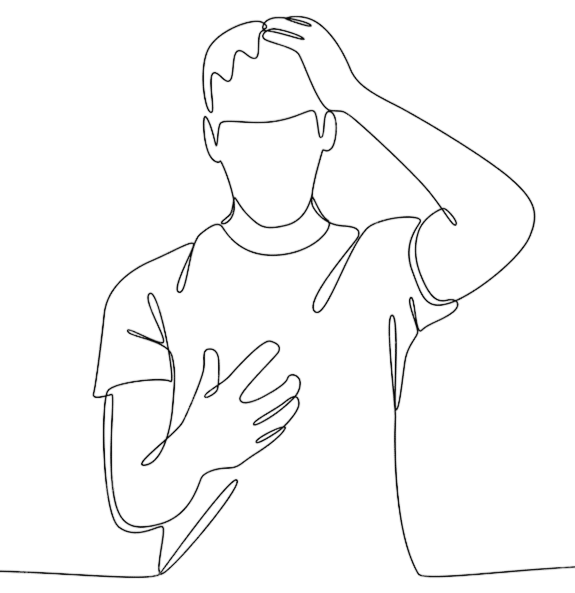
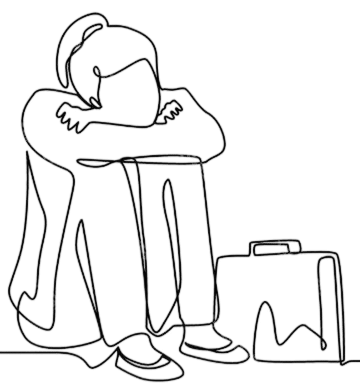
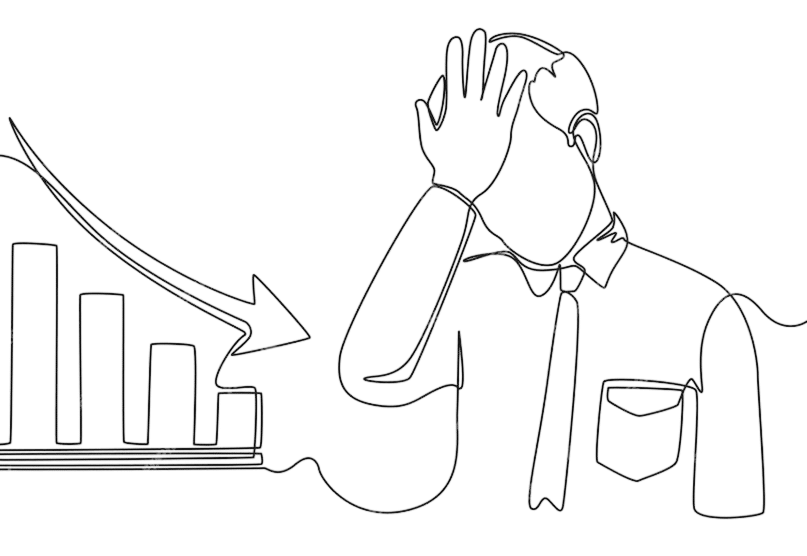
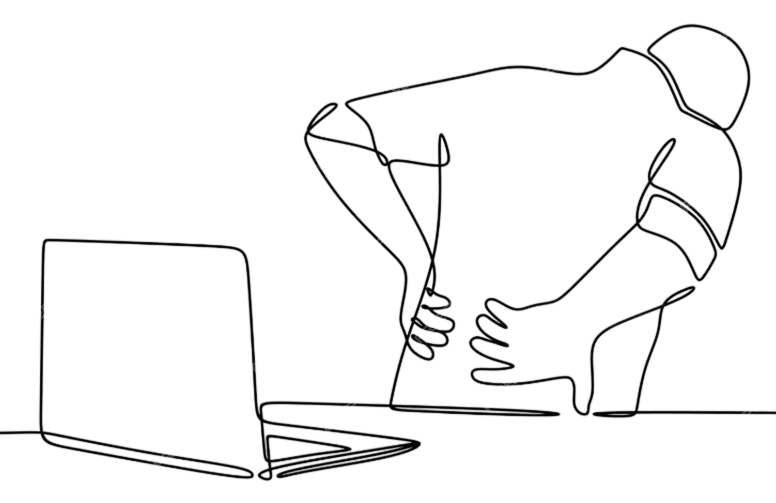
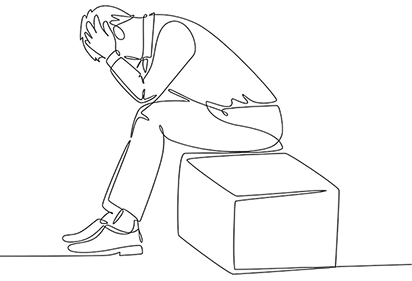
Anxiety stemming from traumatic experiences
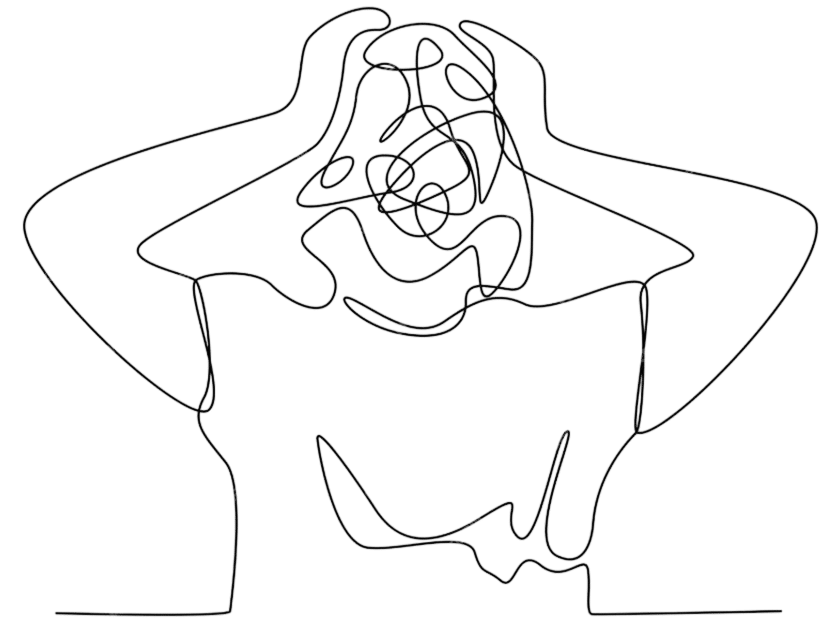
You might be wondering whether what you’re experiencing is “just stress” or something more serious, or you’re concerned about the stigma of having a mental health diagnosis. Perhaps you’re trying to understand if you need professional help or if you should be able to manage anxiety on your own.
Anxiety disorders are recognized mental health conditions … but that doesn’t mean there’s something fundamentally wrong with you or that you’re “broken.” Anxiety becomes a clinical disorder when it’s persistent, excessive, interferes with daily functioning, and doesn’t match the actual level of threat in your environment.
Understanding anxiety as a mental health condition:
When anxiety crosses into disorder territory:
Anxiety can be unmanageable and sometimes feel like it’s controlling your life. Anxiety about work, family, health, money, and life’s daily challenges can lead to chronic fear and worry. If anxiety has narrowed your life, continually saps your energy, and makes you avoid things you used to enjoy, it’s moved beyond normal stress.
The difference between normal anxiety and anxiety disorders:
Recognized anxiety disorders:
As an anxiety therapist in San Jose, California, I treat various anxiety presentations that are recognized as mental health conditions:
Generalized Anxiety Disorder:
Chronic worry about multiple areas of life that are difficult to control, accompanied by physical tension and restlessness.
Panic Disorder:
Recurrent panic attacks … sudden overwhelming fear with physical symptoms like racing heart and shortness of breath. The fear of having another panic attack becomes consuming.
Social Anxiety Disorder:
Intense fear of judgment or embarrassment in social or performance situations, leading to avoidance of interactions or events.
Specific Phobias:
Excessive fear of particular objects or situations (flying, heights, animals, enclosed spaces) that leads to avoidance.
Obsessive-Compulsive Disorder:
Intrusive unwanted thoughts (obsessions) that create anxiety, leading to repetitive behaviors or mental rituals (compulsions) aimed at reducing distress.
Health Anxiety:
Excessive worry about having or developing serious medical conditions, with constant checking and reassurance-seeking.
What “mental illness” really means:
It’s about your brain’s response system:
Anxiety disorders reflect how your nervous system learned to respond to perceived threats. Often this stems from past experiences … trauma, chronic stress, or overwhelming events … that taught your brain to stay on high alert.
Many people don’t realize that chronic anxiety often stems from unprocessed traumatic experiences. Your system learned these responses for good reasons, even if they’re no longer helpful.
It’s treatable:
Mental health conditions aren’t character flaws or permanent states. With the right treatment, anxiety disorders respond very well to therapy.
I have 25 years of experience helping clients overcome anxiety using a focused blend of evidence-based therapies, including Eye Movement Desensitization and Reprocessing Therapy (EMDR), Cognitive Behavioral Therapy (CBT), and Mindfulness.
Why the diagnosis can be helpful:
Validation and understanding:
Having a recognized condition means you’re not making it up, being dramatic, or weak. What you’re experiencing is real and has a name.
Access to effective treatment:
Anxiety disorders have well-researched, evidence-based treatments. Knowing you have an anxiety disorder helps guide which approaches will be most effective.
Insurance coverage:
A mental health diagnosis is typically required for insurance coverage of therapy services.
Self-compassion:
Understanding that anxiety is a medical condition … not a personal failing … often reduces shame and self-criticism.
What treatment offers:
In anxiety therapy, I will help you understand your anxiety triggers, decrease your avoidance, and change your negative thought patterns. You will learn relaxation and coping skills to get through stressful moments.
With the evidence-based methods of EMDR and CBT, I effectively promote your healing from anxiety and help you establish patterns of long-term resilience.
Real transformation is possible:
Clients who work with me often find that:
For professionals in Silicon Valley and the South Bay:
I specialize in working with people in high-pressure situations … Software Engineers, Product Managers, Program Managers, Executives, Engineering Managers, Lawyers, Doctors, Teachers, Business Owners, and College Students … who often wonder if their anxiety is “just” part of demanding professional life or something that needs treatment.
If anxiety is interfering with your performance, relationships, or quality of life, it’s worth addressing … regardless of whether it meets formal diagnostic criteria.
Accessing anxiety treatment in Valley Fair and Santa Row:
My office is located at 2020 Forest Avenue, Suite 3, San Jose, California 95128. I serve clients throughout South Bay, Silicon Valley, Santa Clara County, and the greater San Jose area (95128 and surrounding zip codes).
Both in-person and online appointments are available for California residents throughout the Bay Area.
You might be noticing changes in how you feel, but aren’t sure if it’s anxiety or just normal stress. Perhaps you’re wondering if you should seek help now or wait to see if things improve on their own, or you’re trying to understand if what you’re experiencing matches what others describe as anxiety.
Early signs of anxiety often appear gradually, and many people don’t recognize them as anxiety at first. As an anxiety therapist in San Jose, California, I help clients identify anxiety patterns early so we can address them before they become more entrenched.
Physical signs that often appear first:
Tension and restlessness:
Changes in sleep patterns:
Digestive issues:
Cardiovascular symptoms:
Mental and emotional early signs:
Excessive worry:
Anxiety about work, family, health, money, and life’s daily challenges can lead to chronic fear and worry. Early signs include:
Difficulty concentrating:
Irritability and mood changes:
Behavioral early warning signs:
Avoidance beginning:
If anxiety has narrowed your life, continually saps your energy, and makes you avoid things you used to enjoy, it likely started with subtle avoidance patterns:
Seeking reassurance:
Changes in daily functioning:
Context matters … when anxiety crosses the line:
Normal stress versus anxiety disorder:
Everyone experiences anxiety sometimes. The aftermath of a stressful situation can leave you feeling temporarily anxious and on edge. What distinguishes an anxiety disorder is:
Early signs in different anxiety types:
Generalized Anxiety:
Chronic worry about multiple topics, difficulty relaxing, and persistent tension.
Panic Disorder:
Unexpected, sudden fear episodes, followed by worry about having more attacks.
Social Anxiety:
Increasing discomfort in social situations, worrying about judgment, and avoiding interactions.
Specific Phobias:
Growing fear and avoidance of particular situations or objects.
Health Anxiety:
Becoming preoccupied with physical sensations and worrying that they indicate serious illness.
OCD:
Intrusive repetitive thoughts and developing rituals to manage the anxiety they create.
Why early recognition matters:
Anxiety often worsens without treatment:
Anxiety can be unmanageable and sometimes feel like it’s controlling your life. What starts as a manageable worry can escalate into pervasive anxiety that significantly impacts quality of life.
Earlier intervention means faster results:
The sooner anxiety patterns are addressed, the easier they are to shift. Long-standing anxiety creates deeply entrenched neural pathways and avoidance patterns that take more time to change.
Preventing complications:
Untreated anxiety often leads to:
What to do if you recognize early signs:
Seek professional evaluation:
In anxiety therapy, I will help you understand your anxiety triggers, decrease your avoidance, and change your negative thought patterns. You will learn relaxation and coping skills to get through stressful moments.
I have 25 years of experience helping clients overcome anxiety using a focused blend of evidence-based therapies, including EMDR, CBT, and Mindfulness.
Don’t wait for it to become severe:
Many people wait until anxiety is debilitating before seeking help. Early intervention prevents anxiety from narrowing your life and makes treatment faster and more effective.
For professionals in the South Bay:
I specialize in working with people in high-pressure situations … Software Engineers, Product Managers, Program Managers, Executives, Engineering Managers, Lawyers, Doctors, Teachers, Business Owners, and College Students.
High-achievers often normalize anxiety as “part of the job” and don’t recognize early signs until anxiety significantly impacts performance or health.
Accessing anxiety therapy in Valley Fair and Santa Row:
My office is located at 2020 Forest Avenue, Suite 3, San Jose, California 95128. I serve clients throughout South Bay, Silicon Valley, Santa Clara County, and the greater San Jose area (95128 and surrounding zip codes).
Both in-person and online appointments are available for California residents throughout the Bay Area.
You might be experiencing uncomfortable physical sensations and wondering if they’re related to anxiety, or you’re confused because doctors haven’t found medical explanations for your symptoms. Perhaps you’re validating whether what you feel matches what others describe as anxiety, or you’re trying to understand the connection between your physical symptoms and emotional stress.
Anxiety creates real physical sensations because your nervous system activates the same way it would if you were facing actual danger. As an anxiety therapist in San Jose, California, I help clients understand that these physical symptoms aren’t “all in your head” … they’re your body’s genuine stress response.
Common physical sensations of anxiety:
Cardiovascular symptoms:
Many people with anxiety worry they’re having a heart attack during panic episodes, which then increases the anxiety and physical symptoms.
Breathing difficulties:
Muscle tension and pain:
Digestive issues:
Anxiety about work, family, health, money, and life’s daily challenges can lead to chronic fear and worry that affects your digestive system:
Nervous system activation:
Fatigue and exhaustion:
If anxiety has narrowed your life, continually saps your energy, and makes you avoid things you used to enjoy, the physical toll shows up as:
Sleep disruption:
Why anxiety creates physical symptoms:
Your stress response system:
When your brain perceives a threat, it activates your sympathetic nervous system … the “fight or flight” response. This causes:
When the system stays activated:
With anxiety disorders, this stress response activates even when there’s no real danger, and it doesn’t turn off properly. Your body stays in a state of high alert, creating chronic physical symptoms.
Physical symptoms that worry you … creating more anxiety:
The anxiety spiral:
Physical symptoms can create a vicious cycle:
This is especially common with health anxiety, where every physical sensation feels like evidence of serious illness.
Different anxiety types, different physical patterns:
Panic attacks:
Sudden overwhelming fear with intense physical symptoms … racing heart, shortness of breath, dizziness, sweating, trembling. Often feels like a heart attack or like you’re dying.
Generalized Anxiety:
Chronic muscle tension, fatigue, digestive issues, and sleep problems. Physical symptoms are persistent but may fluctuate in intensity.
Social Anxiety:
Blushing, sweating, shaking, nausea, and urgent bathroom needs in social situations. Symptoms often worsen when you fear others will notice them.
Health Anxiety:
Hyperawareness of every physical sensation, with constant worry that normal sensations indicate serious illness. Seeking medical reassurance repeatedly.
How anxiety therapy addresses physical symptoms:
In anxiety therapy, I will help you understand your anxiety triggers, decrease your avoidance, and change your negative thought patterns. You will learn relaxation and coping skills to get through stressful moments.
What treatment offers:
I have 25 years of experience helping clients overcome anxiety using a focused blend of evidence-based therapies, including EMDR, CBT, and Mindfulness. These approaches address both the mental and physical aspects of anxiety.
Real relief from physical symptoms:
Clients who work with me often find that:
For professionals in Silicon Valley:
I specialize in working with people in high-pressure situations … Software Engineers, Product Managers, Program Managers, Executives, Engineering Managers, Lawyers, Doctors, Teachers, Business Owners, and College Students.
High-achievers often push through physical symptoms, not realizing they’re manifestations of anxiety that need addressing.
Accessing treatment in Valley Fair and Santa Row:
My office is located at 2020 Forest Avenue, Suite 3, San Jose, California 95128. I serve clients throughout South Bay, Silicon Valley, Santa Clara County, and the greater San Jose area (95128 and surrounding zip codes).
Both in-person and online appointments are available for California residents throughout the Bay Area.
You might be trying to understand why you feel anxious, especially when it seems to come out of nowhere or doesn’t match the actual level of threat. Perhaps you’re noticing patterns in when anxiety shows up, but aren’t sure what’s causing it, or you’re wondering if your past experiences are connected to current anxiety.
Anxiety triggers are the specific situations, thoughts, sensations, or memories that activate your anxiety response. As an anxiety therapist in San Jose, California, I help clients identify their unique triggers so we can address both the triggers themselves and the underlying causes fueling the anxiety.
Common categories of anxiety triggers:
Past traumatic experiences:
Many people don’t realize that chronic anxiety often stems from unprocessed traumatic experiences. Your nervous system learned to stay on high alert based on past events, and that vigilance continues even when you’re objectively safe now.
Types of past experiences that trigger current anxiety:
Even experiences that don’t seem “traumatic enough” can create anxiety triggers if they overwhelmed your system at the time.
Situations that trigger anxiety:
Social and performance situations:
Common among professionals in Silicon Valley who face constant high-stakes presentations and evaluations.
Specific environments:
Responsibility and decision-making:
Physical sensations as triggers:
Body sensations that spark anxiety:
Anxiety about work, family, health, money, and life’s daily challenges can lead to chronic fear and worry … and sometimes just noticing your body’s normal variations triggers that worry.
Health anxiety triggers:
Thought patterns that trigger anxiety:
“What if” thinking:
These thoughts activate anxiety even when nothing threatening is actually happening.
Perfectionist thoughts:
Common among high-achieving professionals who feel constant pressure to perform.
Catastrophic thinking:
Jumping to worst-case scenarios and imagining everything going wrong. This thinking pattern both triggers and maintains anxiety.
Life circumstances and stress:
Current stressors that lower your threshold:
If anxiety has narrowed your life, continually saps your energy, and makes you avoid things you used to enjoy, ongoing stressors often maintain and worsen the pattern.
Substance-related triggers:
Things that can increase anxiety:
Understanding your personal trigger patterns:
Why triggers are unique to you:
Triggers connect to your individual history, experiences, and what your nervous system learned to perceive as threatening. What triggers anxiety in you might not affect someone else, and vice versa.
Multiple triggers often cluster:
You may notice anxiety shows up in specific combinations … certain situations, plus physical sensations, plus particular thoughts. Understanding these patterns helps target treatment effectively.
How anxiety therapy addresses triggers:
In anxiety therapy, I will help you understand your anxiety triggers, decrease your avoidance, and change your negative thought patterns. You will learn relaxation and coping skills to get through stressful moments.
What treatment offers:
I have 25 years of experience helping clients overcome anxiety using a focused blend of evidence-based therapies, including EMDR, CBT, and Mindfulness.
EMDR for trauma-based triggers:
With the evidence-based methods of EMDR and CBT, I effectively promote your healing from trauma and help you establish patterns of long-term resilience. When triggers stem from past traumatic experiences, EMDR processes those memories so they no longer activate intense anxiety.
Results clients experience:
Clients who work with me often find that:
For professionals in the South Bay:
I specialize in working with people in high-pressure situations … Software Engineers, Product Managers, Program Managers, Executives, Engineering Managers, Lawyers, Doctors, Teachers, Business Owners, and College Students.
Understanding your triggers in the context of demanding professional environments helps create effective strategies for managing anxiety without compromising performance.
Accessing anxiety treatment in Valley Fair and Santa Row:
My office is located at 2020 Forest Avenue, Suite 3, San Jose, California 95128. I serve clients throughout South Bay, Silicon Valley, Santa Clara County, and the greater San Jose area (95128 and surrounding zip codes).
Both in-person and online appointments are available for California residents throughout the Bay Area.
You might be wondering if anxiety is something you’ll always have to manage, or if therapy can actually resolve it rather than just giving you coping strategies. Perhaps you’re concerned about investing in treatment only to struggle with anxiety for the rest of your life, or you want to know what “recovery” from anxiety actually looks like.
Anxiety can significantly improve and even resolve with proper treatment. Many clients find that anxiety stops controlling their lives and becomes manageable or minimal. As an anxiety therapist in San Jose, California, with 25 years of experience, I’ve seen countless clients move from debilitating anxiety to living full, confident lives.
What “going away” means:
Complete resolution versus management:
Some people experience complete resolution … their anxiety no longer shows up in daily life except occasionally in truly stressful situations, and even then it’s proportional and manageable. Others find anxiety becomes much milder and easier to manage, no longer interfering with life quality.
Anxiety can be unmanageable and sometimes feel like it’s controlling your life. Treatment aims to shift this to: anxiety is present sometimes, but you have control, and it doesn’t narrow your life.
Realistic expectations:
Why anxiety can be resolved with proper treatment:
Addressing root causes:
Many people don’t realize that chronic anxiety often stems from unprocessed traumatic experiences. When we process the underlying trauma fueling anxiety, the anxiety often decreases significantly or disappears.
I have 25 years of experience helping clients overcome anxiety using a focused blend of evidence-based therapies, including EMDR, CBT, and Mindfulness. These approaches address both symptoms and root causes.
Rewiring the nervous system:
If anxiety has narrowed your life, continually saps your energy, and makes you avoid things you used to enjoy, your nervous system has learned to stay on high alert. Therapy helps retrain this system to respond more appropriately to actual threats.
With the evidence-based methods of EMDR and CBT, I effectively promote your healing from anxiety and help you establish patterns of long-term resilience.
Factors that influence outcomes:
Type and severity of anxiety:
Consistency with treatment:
Addressing underlying factors:
What clients experience:
The transformation:
Clients who work with me often find that:
Different timelines for different people:
Long-term outcomes:
Research on anxiety treatment:
Studies show that evidence-based treatments like CBT and EMDR create lasting improvements. Most people maintain gains after treatment ends, and many continue improving as they apply skills learned in therapy.
Building resilience:
Treatment doesn’t just reduce current anxiety … it builds capacity to handle future stressors without developing chronic anxiety again. You learn patterns of responding that serve you long-term.
When anxiety resurfaces:
Life brings stressful periods, and some anxiety may return temporarily. The difference after treatment is:
Different anxiety types and resolution:
Generalized Anxiety:
Often improves substantially with consistent treatment, though some people need ongoing maintenance of skills.
Panic Disorder:
Many people become completely panic-free after processing underlying causes and learning to manage physical sensations differently.
Social Anxiety:
It can significantly improve or resolve, especially when rooted in past experiences of judgment or rejection that are processed.
Specific Phobias:
Often respond very well to treatment, with many people no longer experiencing phobic fear.
Health Anxiety:
Improves as underlying trauma or loss experiences are processed and catastrophic thinking patterns change.
OCD:
Symptoms can substantially decrease, though some people benefit from ongoing skill maintenance.
How therapy creates lasting change:
In anxiety therapy, I will help you understand your anxiety triggers, decrease your avoidance, and change your negative thought patterns. You will learn relaxation and coping skills to get through stressful moments.
What makes change last:
For professionals in the South Bay:
I specialize in working with people in high-pressure situations … Software Engineers, Product Managers, Program Managers, Executives, Engineering Managers, Lawyers, Doctors, Teachers, Business Owners, and College Students.
Many high achievers worry they’ll never be free of anxiety, given demanding careers. Treatment helps you perform at high levels without chronic anxiety as a cost.
Accessing anxiety treatment in Valley Fair and Santa Row:
My office is located at 2020 Forest Avenue, Suite 3, San Jose, California 95128. I serve clients throughout South Bay, Silicon Valley, Santa Clara County, and the greater San Jose area (95128 and surrounding zip codes).
Both in-person and online appointments are available for California residents throughout the Bay Area.
You might be trying to determine if your anxiety is “bad enough” to need professional help, or you’re wondering where your experience falls on the spectrum of anxiety severity. Perhaps you’ve been minimizing your struggles or pushing through, but you’re starting to wonder if what you’re experiencing qualifies as severe.
Anxiety severity exists on a spectrum, and “severe anxiety” typically means it’s significantly interfering with major areas of your life … work performance, relationships, physical health, or daily functioning. As an anxiety therapist in San Jose, California, I help clients understand that you don’t need to wait until anxiety is severe to seek treatment, but recognizing severe anxiety is important for getting appropriate help.
Indicators of severe anxiety:
Significant functional impairment:
Anxiety can be unmanageable and sometimes feels like it’s controlling your life. Severe anxiety means:
If anxiety has narrowed your life, continually saps your energy, and makes you avoid things you used to enjoy … and this is happening across multiple life domains … it’s likely severe.
Physical symptoms that interfere with life:
Intense, persistent worry:
Anxiety about work, family, health, money, and life’s daily challenges can lead to chronic fear and worry. Severe anxiety involves:
Avoidance that limits your life:
Severe anxiety by type:
Severe Generalized Anxiety:
Excessive, uncontrollable worry about multiple topics that significantly interferes with concentration, work, and relationships. Physical tension and restlessness are constant. Sleep is severely disrupted.
Severe Panic Disorder:
Frequent panic attacks (multiple per week), intense fear of having attacks, and a life structured entirely around avoiding triggers. May be unable to work, drive, or leave home.
Severe Social Anxiety:
Complete avoidance of social situations causes isolation and an inability to work or attend school. Severe physical symptoms in any social interaction. Life is extremely limited by fear of judgment.
Severe OCD:
Obsessions occupying hours daily, compulsions interfering with functioning. Unable to work or maintain relationships due to rituals. Severe distress when prevented from performing compulsions.
Severe Health Anxiety:
Constant preoccupation with illness, multiple medical visits weekly, unable to function due to worry about health. All physical sensations are interpreted as dangerous. Life revolves around health concerns.
Severe Specific Phobia:
Phobia causes complete avoidance affecting major life areas … unable to fly for necessary trips, can’t take elevators, limiting job options, avoiding medical care due to needle phobia.
When severe anxiety becomes dangerous:
Warning signs requiring immediate attention:
The difference between severe and manageable anxiety:
Manageable anxiety:
Severe anxiety:
Why severity matters for treatment:
Severe anxiety needs comprehensive treatment:
I have 25 years of experience helping clients overcome anxiety using a focused blend of evidence-based therapies, including EMDR, CBT, and Mindfulness.
For severe anxiety:
You don’t have to wait until it’s severe:
Many people suffer unnecessarily because they think their anxiety “isn’t bad enough” for treatment. Early intervention prevents anxiety from becoming severe and creates faster improvement.
Good news about severe anxiety:
Severe anxiety responds to treatment:
Even severe, long-standing anxiety can improve significantly with proper treatment. In anxiety therapy, I will help you understand your anxiety triggers, decrease your avoidance, and change your negative thought patterns.
With the evidence-based methods of EMDR and CBT, I effectively promote your healing from anxiety and help you establish patterns of long-term resilience.
Real transformation is possible:
Clients who work with me often find that:
I’ve worked with clients whose anxiety was so severe they couldn’t leave home, and watched them rebuild full, engaged lives.
For professionals in Silicon Valley:
I specialize in working with people in high-pressure situations … Software Engineers, Product Managers, Program Managers, Executives, Engineering Managers, Lawyers, Doctors, Teachers, Business Owners, and College Students.
High-achievers often function despite severe anxiety, using willpower to push through. Just because you’re still working doesn’t mean your anxiety isn’t severe … if it’s causing significant distress and limiting your quality of life, it warrants treatment.
Accessing treatment in Valley Fair and Santa Row:
My office is located at 2020 Forest Avenue, Suite 3, San Jose, California 95128. I serve clients throughout South Bay, Silicon Valley, Santa Clara County, and the greater San Jose area (95128 and surrounding zip codes).
Both in-person and online appointments are available for California residents throughout the Bay Area.
You might be curious about what actually happens in anxiety therapy and whether it will be effective for your specific situation. Perhaps you’ve tried self-help approaches without success and want to understand how professional treatment differs, or you’re evaluating whether therapy is worth the investment of time and money.
Anxiety therapy uses evidence-based approaches that address both the symptoms and underlying causes of anxiety. As an anxiety therapist in San Jose, California, I use a combination of proven methods tailored to each client’s unique anxiety presentation and goals.
Evidence-based approaches for anxiety:
Cognitive Behavioral Therapy (CBT):
CBT is one of the most researched and effective treatments for anxiety disorders. In anxiety therapy, I will help you understand your anxiety triggers, decrease your avoidance, and change your negative thought patterns. You will learn relaxation and coping skills to get through stressful moments.
What CBT addresses:
Eye Movement Desensitization and Reprocessing (EMDR):
Many people don’t realize that chronic anxiety often stems from unprocessed traumatic experiences. EMDR processes these underlying memories so they no longer fuel current anxiety.
Anxiety about work, family, health, money, and life’s daily challenges can lead to chronic fear and worry. EMDR addresses the past experiences that created this chronic worry pattern, creating deeper and more lasting change than symptom management alone.
Mindfulness strategies:
I combine CBT and EMDR with Mindfulness strategies to help you make meaningful changes, let go of the past, and embrace the present with awareness and self-compassion. Mindfulness helps you observe anxious thoughts and physical sensations without getting caught up in them.
What treatment looks like session to session:
Initial sessions (assessment and planning):
Active treatment phase:
Integration and completion:
How different anxiety types are treated:
Generalized Anxiety and Chronic Worry:
A combination of CBT to manage current worry patterns and EMDR to process experiences that created the tendency toward chronic anxiety. Learning to tolerate uncertainty and challenge “what if” thinking.
Panic Attacks and Panic Disorder:
Understanding the panic cycle, learning to manage physical sensations differently, processing any traumatic panic experiences or underlying trauma, and gradually facing situations associated with panic.
Social Anxiety:
Processing past experiences of judgment, rejection, or humiliation. Challenging beliefs about how others perceive you. Gradually increasing social exposure while building skills.
Specific Phobias:
EMDR to process frightening experiences that created the phobia. Gradual exposure to feared situations. Understanding and managing the fear response.
Health Anxiety:
Processing medical trauma or loss experiences. Challenging catastrophic thinking about physical sensations. Learning to tolerate uncertainty about health.
Obsessive-Compulsive Disorder:
CBT exposure and response prevention for managing compulsions. EMDR for underlying trauma. Building tolerance for anxiety without performing rituals.
What makes therapy effective:
Addressing root causes, not just symptoms:
If anxiety has narrowed your life, continually saps your energy, and makes you avoid things you used to enjoy, symptom management alone won’t create lasting change. Effective therapy addresses what created the anxiety pattern in the first place.
With the evidence-based methods of EMDR and CBT, I effectively promote your healing from anxiety and help you establish patterns of long-term resilience.
Active participation:
Therapy works best when you’re engaged … practicing skills between sessions, facing feared situations gradually, and being honest about what’s happening. This isn’t passive treatment where the therapist “fixes” you … it’s collaborative work toward your goals.
Tailored to your specific needs:
I have 25 years of experience helping clients overcome anxiety using a focused blend of evidence-based therapies. I adapt treatment to your specific anxiety presentation, learning style, and life circumstances.
Timeline for improvement:
Early changes (first 2-3 months):
Significant improvement (3-6 months):
Lasting change (6+ months):
What clients experience:
Clients who work with me often find that:
For professionals in the South Bay:
I specialize in working with people in high-pressure situations … Software Engineers, Product Managers, Program Managers, Executives, Engineering Managers, Lawyers, Doctors, Teachers, Business Owners, and College Students.
Treatment focuses on practical approaches that fit demanding schedules and addresses anxiety in professional contexts … presentations, evaluations, deadlines, and high-stakes decision-making.
Accessing anxiety therapy in Valley Fair and Santa Row:
My office is located at 2020 Forest Avenue, Suite 3, San Jose, California 95128. I serve clients throughout South Bay, Silicon Valley, Santa Clara County, and the greater San Jose area (95128 and surrounding zip codes).
Both in-person and online appointments are available for California residents throughout the Bay Area.
You might be trying to understand which type of anxiety you’re experiencing, or you’re wondering if your symptoms match a recognized anxiety disorder. Perhaps you’ve heard various anxiety terms but aren’t clear on the differences, or you want to know if what you’re experiencing is a specific diagnosable condition.
Anxiety disorders encompass several distinct conditions, each with characteristic symptoms and patterns. As an anxiety therapist in San Jose, California, I treat all types of anxiety disorders using evidence-based approaches tailored to each presentation.
Major anxiety disorder types:
Generalized Anxiety Disorder (GAD):
Chronic, excessive worry about multiple areas of life that are difficult to control. Anxiety about work, family, health, money, and life’s daily challenges can lead to chronic fear and worry.
Characteristics:
Common among professionals in Silicon Valley who experience constant pressure and responsibility across work and personal life.
Panic Disorder:
Recurrent unexpected panic attacks … sudden episodes of intense fear with physical symptoms. The fear of having another panic attack becomes overwhelming and can significantly limit life.
Characteristics:
Social Anxiety Disorder:
Intense fear of social or performance situations where you might be judged, embarrassed, or humiliated. This goes beyond normal nervousness to significantly interfere with life.
Characteristics:
Specific Phobias:
Excessive fear of particular objects or situations that’s out of proportion to actual danger. The fear leads to avoidance that can limit life significantly.
Common phobias:
Obsessive-Compulsive Disorder (OCD):
Intrusive, unwanted thoughts (obsessions) that create anxiety, leading to repetitive behaviors or mental rituals (compulsions) aimed at reducing the distress.
Characteristics:
Common themes: contamination fears, harm concerns, need for symmetry, intrusive taboo thoughts.
Agoraphobia:
Fear of being in situations where escape might be difficult or help unavailable if panic symptoms occur. This can become so severe that leaving home feels impossible.
Characteristics:
Health Anxiety (Illness Anxiety Disorder):
Excessive worry about having or developing serious medical conditions. If anxiety has narrowed your life, continually saps your energy, and makes you avoid things you used to enjoy … and that narrowing centers on health concerns … this may be health anxiety.
Characteristics:
Separation Anxiety Disorder:
While often associated with children, adults can experience excessive fear about separation from attachment figures or leaving home.
Other related conditions:
Claustrophobia:
Specific fear of enclosed or confined spaces.
Performance Anxiety:
Anxiety specifically about performing (presentations, public speaking, tests) is common in professional settings.
How anxiety disorders develop:
Common contributing factors:
Many people don’t realize that chronic anxiety often stems from unprocessed traumatic experiences. Past events teach the nervous system to stay on high alert, creating vulnerability to anxiety disorders.
Risk factors:
Why the specific type matters less than you think:
Overlapping symptoms:
Most people don’t fit neatly into one category. You might have generalized anxiety with occasional panic attacks, or social anxiety stemming from trauma. Treatment addresses your unique constellation of symptoms regardless of formal diagnosis.
Treatment approaches work across types:
I have 25 years of experience helping clients overcome anxiety using a focused blend of evidence-based therapies, including EMDR, CBT, and Mindfulness. These approaches effectively treat all anxiety disorder types.
In anxiety therapy, I will help you understand your anxiety triggers, decrease your avoidance, and change your negative thought patterns. You will learn relaxation and coping skills to get through stressful moments.
With the evidence-based methods of EMDR and CBT, I effectively promote your healing from anxiety and help you establish patterns of long-term resilience.
Transformation across all anxiety types:
Clients who work with me often find that:
These outcomes occur regardless of which specific anxiety disorder you experience.
For professionals in the South Bay:
I specialize in working with people in high-pressure situations … Software Engineers, Product Managers, Program Managers, Executives, Engineering Managers, Lawyers, Doctors, Teachers, Business Owners, and College Students.
High-achievers often experience anxiety disorders that manifest in professional contexts … performance anxiety during presentations, generalized anxiety about work demands, or health anxiety triggered by stress.
Getting started:
My office is located at 2020 Forest Avenue, Suite 3, San Jose, California 95128. I serve clients throughout South Bay, Silicon Valley, Santa Clara County, and the greater San Jose area (95128 and surrounding zip codes).
Both in-person and online appointments are available for California residents throughout the Bay Area.
Want to learn more about my background and approach to therapy? Visit my About page to understand my experience and credentials. If you have questions about insurance, pricing, or session logistics, check out my FAQ page.